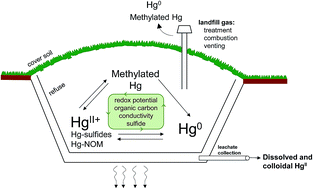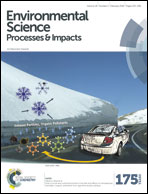Biogeochemical transformations of mercury in solid waste landfills and pathways for release
Abstract
Mercury (Hg) is present in a variety of solid wastes including industrial wastes, household products, consumer electronics, and medical wastes, some of which can be disposed in conventional landfills. The presence of this neurotoxic metal in landfills is a concern due to the potential for it to leach or volatilize from the landfill and impact local ecosystems. The objective of this review is to describe general practices for the disposal of mercury-bearing solid wastes, summarize previous studies on the release of mercury from landfills, and delineate the expected transformations of Hg within landfill environments that would influence transport of Hg via landfill gas and leachate. A few studies have documented the emissions of Hg as landfill gas, primarily as gaseous elemental Hg(0) and smaller amounts as methylated Hg species. Much less is known regarding the release of Hg in leachate. Landfill conditions are unique from other subsurface environments in that they can contain water with very high conductivity and organic carbon concentration. Landfills also experience large changes in redox potential (and the associated microbial community) that greatly influence Hg speciation, transformations, and mobilization potential. Generally, Hg is not likely to persist in large quantities as dissolved species, since Hg(0) tends to evolve in the gas phase and divalent Hg(II) sorbs strongly to particulate phases including organic carbon and sulfides. However, Hg(II) has the potential to associate with or form colloidal particles that can be mobilized in porous media under high organic carbon conditions. Moreover, the anaerobic conditions within landfills can foster the growth of microorganisms that produced monomethyl- and dimethyl-Hg species, the forms of mercury with high potential for bioaccumulation. Much advancement has recently been made in the mercury biogeochemistry research field, and this study seeks to incorporate these findings for landfill settings.



 Please wait while we load your content...
Please wait while we load your content...